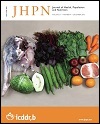Prevalence of Vitamin A Deficiency in South Asia: Causes, Outcomes, and Possible Remedies
DOI:
https://doi.org/10.3329/jhpn.v31i4.19975Keywords:
Blindness, Infections, Malnutrition, Vitamin A, South AsiaAbstract
Vitamin A deficiency (VAD) has been recognized as a public-health issue in developing countries. Economic constraints, sociocultural limitations, insufficient dietary intake, and poor absorption leading to depleted vitamin A stores in the body have been regarded as potential determinants of the prevalence of VAD in South Asian developing countries. VAD is exacerbated by lack of education, poor sanitation, absence of new legislation and enforcement of existing food laws, and week monitoring and surveillance system. Several recent estimates confirmed higher morbidly and mortality rate among children and pregnant and non-pregnant women of childbearing age. Xerophthalmia is the leading cause of preventable childhood blindness with its earliest manifestations as night blindness and Bitots spots, followed by blinding keratomalacia, all of which are the ocular manifestations of VAD. Children need additional vitamin A because they do not consume enough in their normal diet. There are three general ways for improving vitamin A status: supplementation, fortification, and dietary diversification. These approaches have not solved the problem in South Asian countries to the desired extent because of poor governmental support and supervision of vitamin A supplementation twice a year. An extensive review of the extant literature was carried out, and the data under various sections were identified by using a computerized bibliographic search via PubMed, Web of Science, and Google Scholar. All abstracts and full-text articles were examined, and the most relevant articles were selected for screening and inclusion in this review. Conclusively, high prevalence of VAD in South Asian developing countries leads to increased morbidity and mortality among infants, children, and pregnant women. Therefore, stern efforts are needed to address this issue of publichealth significance at local and international level in lower- and middle-income countries of South Asia.
DOI: http://dx.doi.org/10.3329/jhpn.v31i4.19975
J HEALTH POPUL NUTR 2013 Dec; 31(4): 413-423
Downloads
1602
797

